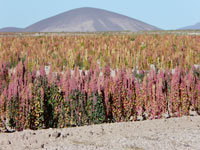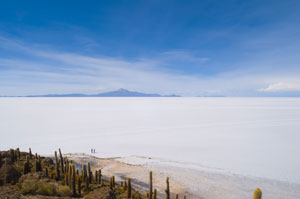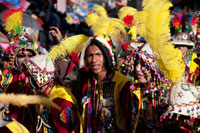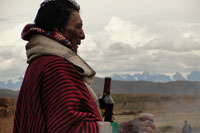 QUECHUA: 1. ethnic group in South American valleys 2. Language of the Inca
QUECHUA: 1. ethnic group in South American valleys 2. Language of the Inca
QUENA: Andean wind instrument similar to a flute
QUÍNOA: super nutritious grain from the Andes (quinoa)
QUIRQUINCHO: Andean armadillo
RE-: prefix added to an adjective to emphasize its meaning; equivalent to mega-, super- or big.
RONROCO: large charango with a deep voice
RUANA: shawl, poncho
SAGÁRNAGA: Artisan street in La Paz
SALAR: salt plain
SALTEÑA: baked empanada filled with a juicy combination of minced potato, vegetables and meat that is typical in Bolivia
 SAYA: Afro-Bolivian dance
SAYA: Afro-Bolivian dance
SINGANI: Bolivian alcoholic beverage produced in the Cinti region. Grape brandy
SOCAVÓN: underground mine
SOROJCHI: altitude sickness
TAMBO: hostel
 TARKA: Bolivian wind instrument
TARKA: Bolivian wind instrument
TIGRECILLO: feline found in Amazonia (ocelot)
TINKU: Bolivian dance from the north of Potosí, inspired by a ritual combat of the same name
TOCUYO: natural cotton produced in eastern Bolivia (calico)
TOTORA: rushes used to build boats on Lake Titicaca
 TRUFI: jitney
TRUFI: jitney
VICUÑA: Andean camellid
VINCHUCA: insect that carries Chagas disease
VIZCACHA: Andean hare (viscacha)
WALAYCHU: small charango with a high pitch

WAWA: baby
WAYRURO: seed famous for its high mystic and sacred characteristics among the Amazonian cultures, Quechua and Aymara, who wear it as a good luck and protective amulet. Some seeds are all red while others are red with black flecks. In these cultures, red symbolizes vitality and represents female energy while black represents masculine energy. When put together in a container, the seeds reproduce and grow in size and number.
YA: 1. finally 2. because 3. right away 4. distributive conjunction 5. as, although 6. typical expression in La Paz with many applications
YAPA/YAPITA: lagniappe, something added as a gift, especially to reward a purchase (bonus)
YATIRI: Aymara shaman
YUCA: cassava
YUNGAS: geographic area (subtropical valley) in South America
ZAMPOÑA: Andean wind instrument


